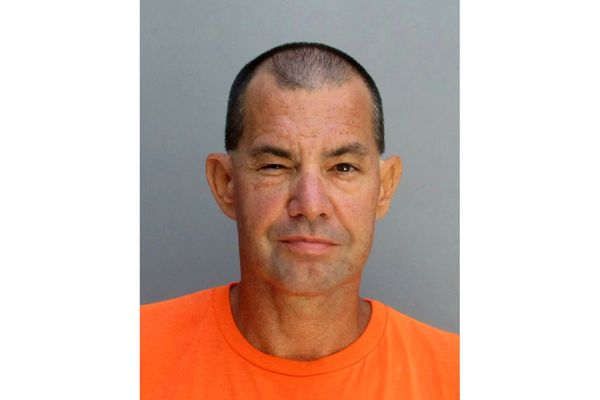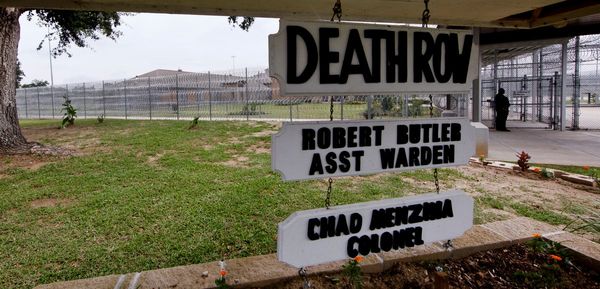
Two tenshukaku main castle towers -- one large, one small -- were covered by scaffolds for restoration work. A crane stood high beside them. The castle's appearance was upsetting but conveyed a sense of dignity as well.
Kumamoto Castle was seriously damaged by the Kumamoto Earthquake in April 2016. Nearly two years after that disaster, I visited the site to see the current state of the castle. When I traveled there in February 10 years ago, plum flowers were blooming near the Iidamaru Gokai Yagura turret, and the scenery was beautiful.
Now, however, areas around the Honmaru main building area, including the site around the turret, are off-limits. Mitsuaki Tsunoda, 69, a member of Kumamoto Yokatoko Annainin no Kai (Association of guides of good places in Kumamoto) guided me around these sections. Volunteer guides, including Tsunoda, are stationed in the castle's general information center to show tourists around.

"We also explain the state of the damage, so visitors will see how the restoration is progressing," he said.
Walking in Ninomaru Park, which is located in the west of the castle grounds, visitors see turrets that illustrate how strong the earthquake was. They include the Mototaiko Yagura turret, which collapsed from its stonewall foundation, and the Inui Yagura turret, a corner of which is supported only by a line of square stones.
Many of the yagura turrets are reproductions from this century.

Warlord Kato Kiyomasa (1562-1611) is believed to have finished building the castle in 1607. In 1877, a fire of unknown cause burned down the main structures, including the tenshukaku towers, just before it was attacked in the Seinan War. The current tenshukaku towers are ferro-concrete buildings built in 1960.
In the Seinan War, the Satsuma forces led by Takamori Saigo attacked Kumamoto Castle, where government troops were stationed, but faced unpredictable difficulties in the battle.
The Satsuma forces kept some of their troops near the castle while the main section headed north. The main Satsuma troops clashed with government forces that had come south to suppress the rebellion, fighting an extremely fierce battle on the Tabaruzaka slope.
Walking east from Konoha Station on the JR Kagoshima Line, you eventually come to a signboard beside a paved road that goes deep into a hill. The sign identifies the slope on the hill as Tabaruzaka.
Though the slope is gentle, banks stand high on both sides of the slope, and bamboo and other trees grow thickly on the banks. The path itself is winding and thus has poor visibility. Visitors can clearly see how difficult it must have been to fight on this spot.
At the top of the slope is Tabaruzaka Park, which commands a fine view. Around the park, hills and valleys form complicated undulations. Mikan tangerine trees spread widely across terraced fields.
The Tabaruzaka Seinan Civil War Museum exhibits battle gear from both sides of the conflict. There is also video showing re-creations of the battle and a modern anime-like character based on a handsome boy described in a folk song titled "Tabaruzaka."
The Battle of Tabaruzaka continued from March 4 to 20, 1877, and the Satsuma forces ultimately lost and fled. The fighting raged in wide areas around the slope as well.
It was such a fierce battle that the government forces alone fired 320,000 bullets per day. The museum exhibits bullets fired by both sides, and bullet marks remain in the precincts of Kumanozajinja shrine and a stone pagoda in nearby areas.
Sueyoshi Nakao, 81, head of an association of tourist guides in the Tabaruzaka area, said, "An elementary school student in a recent walking rally event scooped up earth with his hands, and found bullets dating back to that time."
Buildings and utility poles were destroyed in the war, and an enormous number of bullets remained in the soil. Residents in those days must have had a terrible experience, but today all the areas around Tabaruzaka are peaceful fruit-growing sites.
Twenty years are estimated to be needed to complete the restoration of Kumamoto Castle. Sometime in the future, the castle should be restored so well that people in the future will not be able to imagine its current appearance.
-- Access
Aso Kumamoto Airport is about a 2-hour flight from Haneda Airport. Kumamoto Kotsu Center is about 45 minutes by bus from the airport. JR Konoha Station is about 20 minutes from Kumamoto Station by train.
Inquiries: Kumamoto City Tourism Policy Division at 096-328-2393
To find out more about Japan's attractions, visit http://the-japan-news.com/news/d&d
Read more from The Japan News at https://japannews.yomiuri.co.jp/







